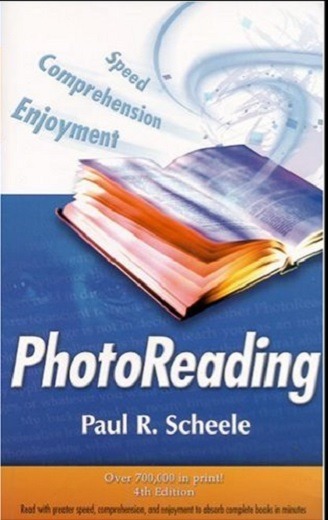You’ve likely heard of speed reading, but photoreading is a completely different concept. Yes, you still read insanely fast, but with this strategy, you read 25,000 words or more per minute. If you’re thinking that sounds impossible, you wouldn’t be alone. However, some people claim the technique works. While scientific evidence either way is scarce, you can decide for yourself what to believe based on what we know so far.
How Is Photoreading Different than Speed Reading?
Speed reading usually aims to boost reading speed two to three times your normal rate. For most people, this ups the rate to around 600 wpm (words per minute). This should also get you through several pages a minute.

Speed reading is also still reading. You just learn a different way to read, which often involves being shown a single word or sentence at a time to avoid distractions and additional eye movements.
Photoreading, on the other hand, isn’t really reading at all. It’s all about photographing each page of a book in your subconscious to be processed and accessed later. Instead of a few pages per minute, you read a new page per second. With this method, you could supposedly get through a book during a break at work.
Imagine the possibilities of being able to read dozens of books each week. You’d save valuable hours, get through your to-read list, and learn so much more. Studying for an exam would be a breeze. But, is photoreading really possible?
How Does Photoreading Work?
Before diving into whether this method works or not, it’s important to understand how the process works. Learning Strategies describes Paul R. Scheele’s photoreading method in full detail, explaining how and why it works. Scheele is the one responsible for discovering this technique. For it to work, you have to be in the correct mental state, which is referred to as the whole state or using your entire mind.

The process involves five main steps:
- Create a clear purpose for what you’re reading and why.
- Preview the material using a special technique to create a framework for your mind.
- “Read” using photoreading where you photograph the pages rapidly in your mind.
- Use the postview process to explore areas you want to learn more about.
- Activate what you’ve photographed to improve comprehension on a topic.
Obviously, the system is more involved than that, but that’s the outline. Each step requires specialized techniques you can learn in classes, through books, or in a self-guided program.
Beginners are able to cut their reading time by up to 70 percent according to Learning Strategies. Over time, you’re able to learn to employ photoreading more with a higher success rate.
Limited Proof
There are two main studies on photoreading, with one being in support of the system and the other being firmly against it. Both are kind of biased.

First, let’s take a look at the positive study. The Learning Strategies course claims to have a 96 percent success rate among students willing to put in the work. It also claims to be a combination of university-proven reading techniques rolled into one highly effective system.
While there are plenty of testimonials available, several prominent authors have spoken in favor of the system. Dr. Ken Blanchard, author of One Minute Manager, says the technique helps him read faster to stay on top of current leadership techniques and trends. And, he’s just one of several who’ve improved their reading times using the system.
Then, there’s the often quoted negative study that says not only does photoreading actually take you longer, it lowers your reading comprehension. NASA commissioned a study to see if the technique worked. The problem is there were only two participants, one being the person conducting the study.

However, Dr. Danielle McNamara, along with another participant, took a photoreading course. The results were less than impressive. In fact, performance on reading comprehension tests decreased compared to normal reading. Also, going through the entire process seemed to take just as long, if not longer, than normal reading rates. This left McNamara to conclude the system doesn’t work.
Scheele has since spoken with McNamara to discuss how the study has major flaws, such as the extremely limited number of participants. Learning Strategies has since published a rebuttal explaining why the study isn’t correct.
Problems with Reading Faster
In studies on speed reading, experts have found that there usually isn’t a shortcut. The most effective technique is actually skimming, which works best when you’re already somewhat familiar with a topic and know what you’re looking for. This allows you to bypass unnecessary filler to move on to the good stuff.

The general consensus is the faster you try to read something, the lower your comprehension. The better approach is simply practicing reading skills to train your brain to recognize word and sentence patterns for faster comprehension.
While photoreading is different, you still need to absorb a significant amount of information in a short period. This could result in lower comprehension rates. Tim Ferriss, author of 4 Hour Work Week, says reading faster is possible with practice, but not at the rate photoreading promises.
Is Photoreading Really Possible?
Maybe. Some people claim it works for them. However, you have to be willing to practice the technique and ensure your mind is in a relaxed, open state. Think of it as a meditative reading state, which may not be possible for everyone.

Photoreading courses are expensive, so if you want to save money and still check out the system, first try Scheele’s book, The Photoreading Whole Mind System for $16.95. The Kindle edition is just $7.99 and is included in Kindle Unlimited. If you do try the system, let us know how it works for you.
Or, you can just read more often. Try proven techniques for more effective reading, and learn how to stay focused while reading.

